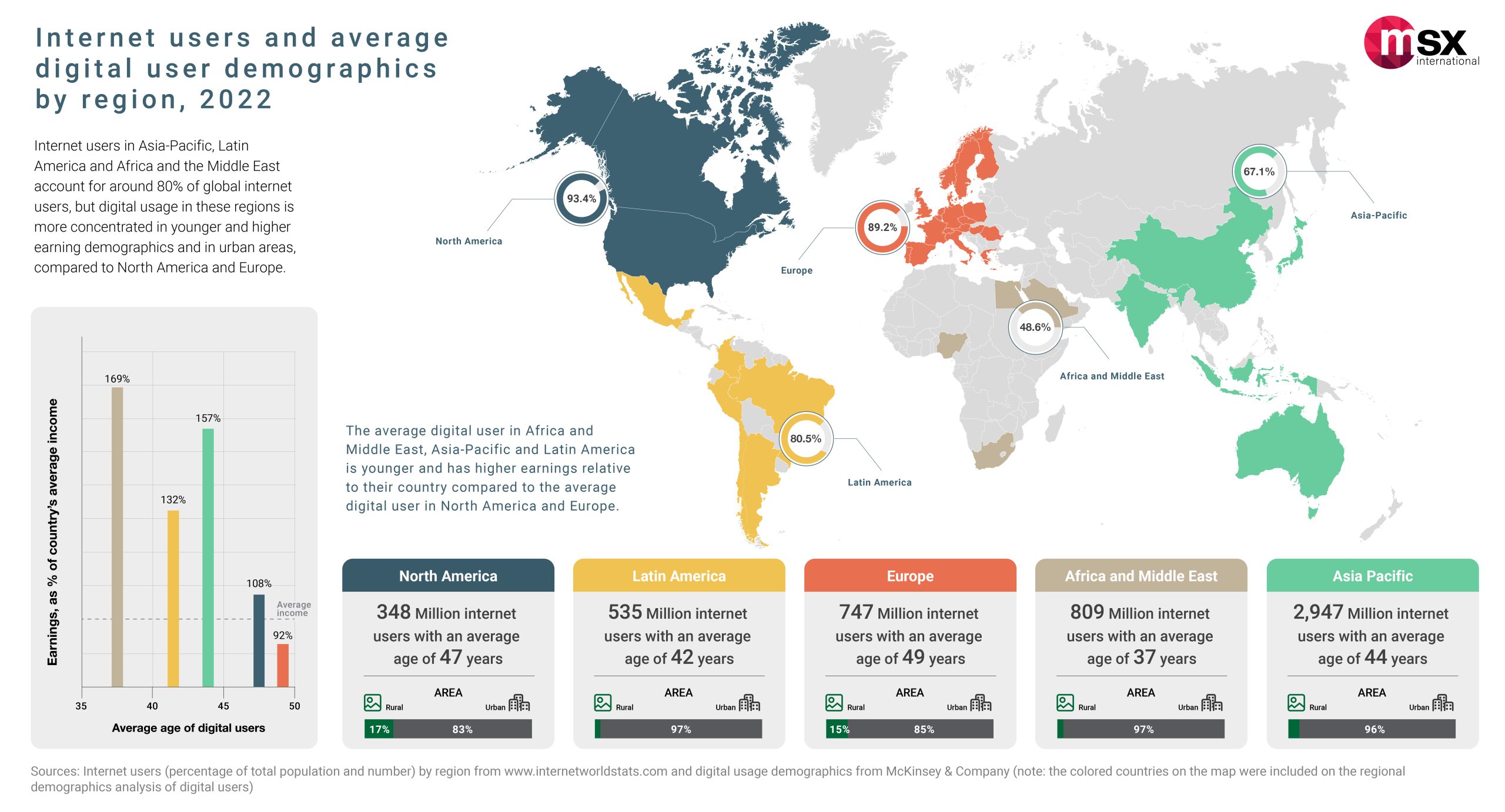
Internet usage and average digital user demographics by region, 2022
A recent survey conducted by MSX revealed that just 47% of people believe that more than half of all consumers will engage primarily in digital retail within the next 12 months, with 54% believing that physical retail interactions will remain the leading choice.
However, regional variations in responses prompted a deeper investigation of internet usage and average digital user demographics, uncovering some interesting statistics.
According to the latest data by internetworldstats.com, as of June 2022, the global internet usage rate stood at 67.9%, meaning that well over half of the world’s population uses the internet.
Internet users in Asia-Pacific, Latin America, Africa and the Middle East account for around 80% of all global users, but digital usage in these regions is more concentrated in younger and higher-earning demographics and in urban areas, compared to digital usage in North America and Europe.
Although these regions account for the majority of internet users globally, the penetration of internet usage in these regions is lower, with only 67.1% of the population of Asia-Pacific being internet users, compared to 93.4% of the population in North America and 89.2% in Europe.
This high level of usage could significantly influence online trends such as social media, ecommerce, online gaming, and even remote working in these regions. It’s also likely to have a profound impact on many aspects of people’s lives, from how they communicate and shop to how they work and play.
The demographics across regions show that millennials and Gen Xers – people born between 1960 and 1990 – are largely digital users, which is unsurprising considering they are described as one of the more digitally native generations. But more interestingly, in some regions, these digital users tend to be above average earners, for example in Asia Pacific and Africa and the Middle East, where the average digital user is younger and has higher earnings relative to their country’s average, compared to users in North America and Europe.

When we look across regions, we see that a large majority of digital usage takes place in urban areas which are more likely to have a stronger digital infrastructure. Rural areas, where internet access may be limited, see less digital usage with as little as 3% in some regions.
Despite improved digital connectivity – including improvements to download speeds which enable more economic activity – less than 50% of the population of Africa and the Middle East are internet users. There are a number of complex factors which could explain why this is the case. Firstly, many parts of the region may still lack basic digital infrastructure such as broadband connectivity, reliable electricity, and mobile networks. This can make it difficult for some users to access the internet, even if they have the means or devices to do so. Secondly, smartphones, data plans, and other digital devices and services can be expensive, making it difficult for people to afford internet access, especially if they live in low-income areas. Furthermore, a lack of education and exposure means that some people may not be familiar with the internet or how to use it effectively, making it difficult for them to understand its value and how it can benefit their lives.
To thrive in the new retail environment, which integrates online and offline experiences, manufacturers must consider these regional differences and limiting factors when planning their sales, distribution, and marketing strategies.
